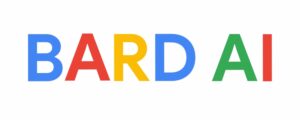
28 Google Bard Stats That You Must Know

It has been five months since the release of Google Bard, and the capabilities of the AI tool have grown exponentially, leading to a hoard of questions about what it is and what it can be used for. Our SEO specialists in particular have been looking at the possible impacts of Google’s AI technology last week, as the company announced its official integration of artificial intelligence into its browsing experience. So what is Google Bard and how is it positioned in the greater world of AI development? We’re here to answer the questions.
(Source: Google)
In this blog, we look at the statistics that illustrate Bard’s abilities and development over the past few months.
As a digital marketing agency, we are always keeping up-to-date on the latest innovations in AI and technology. To learn more about how AI might impact your digital marketing strategy, get in touch with our expert team by phone at 0161 327 2635 or email [email protected].
28 of The Most Important Google Bard Stats

Since the release of ChatGPT in November 2022, AI chatbots have taken the world by storm. People are beginning to use AI for a wide range of tasks – from research to coding, learning new languages, getting recipe ideas, and creating personalised workout plans. So it’s no wonder that Google wanted a slice of the pie.
Alphabet Inc’s own AI tool, ‘Google Bard’ was announced in February 2023 and released for free to the public on 21st March. Like ChatGPT, it is a conversational AI service that responds to queries and commands at lightning speed. It gets its name from the term for archaic poets, who would often play an instrument and recite epic poetry, indicating the tool’s linguistic and creative capabilities.
With all that in mind let’s get into some interesting Google Bard Stats!
- At this time (August 2023), Google Bard is available in over 230 countries and territories (Google)
- As of July 2023, Google Bard is able to communicate in over 40 languages, including Arabic, Chinese, German, Hindi, and Spanish. (Google)
- Between April and May 2023, Google Bard’s traffic rose by 187.2% to 142.6 million visits. (Similarweb)
- On 8th February, Alphabet Inc. lost $100 billion after a promotional video of Google Bard on Twitter showed the chatbot spitting out incorrect information in response to a James Webb Telescope query. (Reuters)
- The technology that Google Bard is based on was under development by Alphabet Inc. for 8 years. (Washington Post)
- Google’s expenses could rise by $6 billion in 2023 if AI chatbots were integrated into search. (Reuters)
- 50% of Google Bard’s training data comes from public forums. (SEJ)
- 6.25% of Bard’s dataset is made up of English web documents and another 6.25% comes from non-English web documents. (SEJ)
- 40% stated that they use the chatbot for researching their interests
- 30% said they used Bard as a creative tool, creating poems, scripts, and stories
- 20% said they used it to help them with work or school
- 10% used Bard for entertainment, including playing games and looking for videos and music (DemandSage)
- 80,000 employees took part in testing Bard. (CNBC)
- In March 2023, the month of its release, Bard had 30 million monthly active users. (MLYearning)
- Bard’s largest user demographic comes from the US (62.6%), followed by the UK (8.29%), and China (3.22%). (MLYearning)
- The dataset that Bard is trained on includes 1.56 trillion words and 137 billion parameters. (MLYearning
- Google’s anticipated global reach for the chatbot is 1 billion users (contentdetector.ai)
- It has been estimated that Alphabet Inc. will sustain an increase of $0.003 to $0.028 in incremental costs on top of its base search cost of ~$0.003 per query. (MediaPost)
- Google Bard was announced in February 2023 and opened up its waiting list to the public in March 2023 (ZDNet)
- In June 2023, Bard’s average visit duration was 3.19 minutes. (contentdetector.ai)
- In March 2023, Bard had an accuracy score of 63%. (Search Engine Land)
- Bard’s biggest traffic source is direct traffic, with 67.7%. (colorlib)
- Bard has a limit of about 1,000 queries per hour. (colorlib)
- Google Bard can create code in over 20 programming languages. (EnterpriseAppsToday)
- Millennials make up the largest share of Bard’s visitors, with 35% of users being 25 – 35 years old. (DemandSage)
- Google Bard’s bounce rate is recorded to be 55.10%. (DemandSage)
- Sunder Pichai, the CEO of Google, asked Google’s staff to spend 2 – 4 hours each day on Bard during testing. (Business Insider India)
- 750GB of text data was used to train the language of the chatbot. (Blogging Capital)
Conclusion

Innovations in AI technology are evidently making a great impact on how we discover, research, and create content.
Google Bard is being used by people all around the world, and gaining more traffic every day. However, it is clear that the chatbot still has a strong competitor in ChatGPT, and there is still lots of room for improvement in this type of technology.
Bard could become a valuable tool in the future of digital marketing, and we are intent on keeping you up-to-date with all its updates and developments.
If you’d like more information on Google Bard or how AI is affecting the world of digital marketing, you can get in touch with us today!




